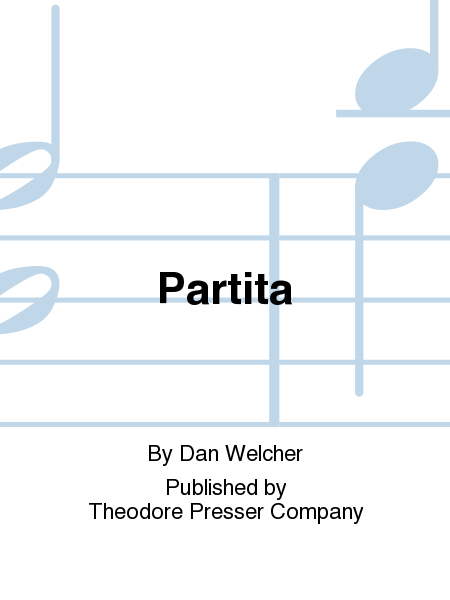Partita
For Horn, violin, and Piano
-
Ships in 2 to 3 weeks
Details
Description
SKU: PR.164002010
For Horn, violin, and Piano. Composed by Dan Welcher. Contemporary. Set of Score and Parts. With Standard notation. Composed 1979. 47+10+13 pages. Duration 19 minutes. Theodore Presser Company #164-00201. Published by Theodore Presser Company (PR.164002010).UPC: 680160037414.
My Partita for Horn, Violin and Piano was commissioned by Michael and Lenore Hatfield, hornist and violinist respectively. This combination of instruments has been used by more than a few composers , most notably the ubiquitous Trio in E-flat by Brahms, but also by later composers like Lennox Berkeley. In terms of tone color, it offers a very strange combination of sounds--the sonorous depth of the modern grand piano, the (in contrast) more airy and more delicate violin, and the rich mellow tones of the horn. How was I to balance these three disparate voices and form a homogeneous ensemble character? My answer was to capitalize on these dissimilarities, and to add a dimension of group psychology. It is no accident that there are few permanently organized professional trios: psychology tells us that three is the worst number for human interactions. With two people, there is either agreement or disagreement. With four or more, various subgroups can co-exist. But with three, more often than not, two of the participants team up, forming a union against the third, who becomes the odd man out. My Partita presents, in five movements, the various two-against-one or one-against-one combinations possible. The movements are organized in terms of tone color: Disagreement: Horn vs. Violin and Piano (Prelude) Piano vs. Horn and Violin (Nocturne) III. Violin vs. Piano (Intermezzo) Agreement: Horn and Violin (Aria) Horn, Violin, and Piano (Toccata) The musical language, too, reflects differences of opinion. The horn's opening recitative, tonally oriented, contrasts sharply with the perky, atonal (in fact, strictly serial) music first presented by violin and piano. These two separate musics are the material on which all five movements are based. In an extramusical sense, the piece represents a coming-to-grips with the problem of threes. After the participants have tried pairing off in various ways, either eliminating the third party altogether or, at the very most, keeping him in his own musical corner, an argument begins (Toccata). The tonal and serial elements vie for supremacy in all three voices, until the rich E-flat melody of the Aria finds its way over the ostinato. All three players, for the first time, are in excited agreement. This being accomplished, the work ends exuberantly in a hard-won unison statement of the horn's opening motive.

 Share
Share